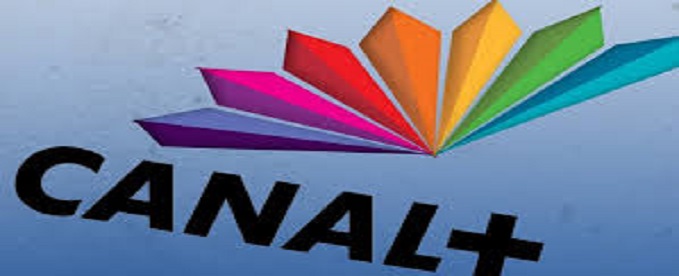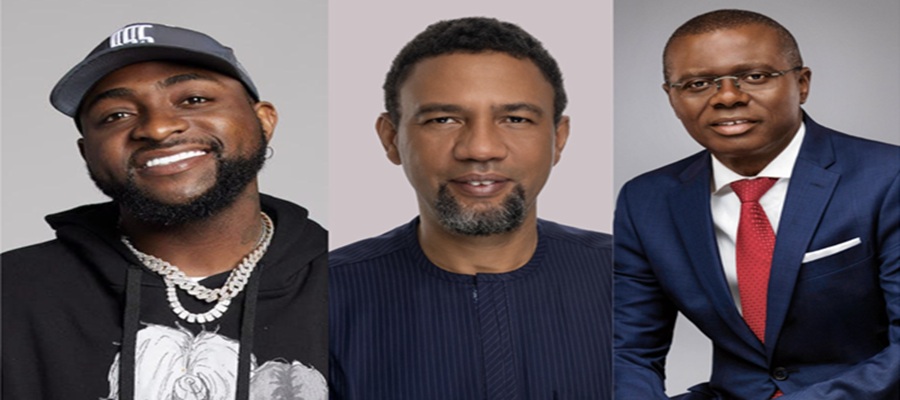Broadcasting
Canal+ Offer for MultiChoice Gains Shareholders’ Support

Some MultiChoice shareholders have expressed relief at the offer by Canal+ to buy Africa’s pay TV giant for $2.9 billion, essentially viewing the potential deal as a vehicle for them to be rescued from an investment that has turned sour.

On April 8,, the deal inched closer to being cemented when the board of MultiChoice agreed to cooperate with Canal+, a sign that it was warming to a tie-up with France’s broadcasting conglomerate.
The board initially rejected the offer by Canal+ to buy the MultiChoice shares that it does not already own for R105 each, saying it was too low and undervalued the company’s growth prospects.
But MultiChoice has been convinced to reconsider its position after Canal+ improved the offer to R125 per share. Canal+ already owns 40.01% of MultiChoice shares on the JSE and wants to pay R35-billion to buy the rest of the company and take control of it.
The next big test is whether MultiChoice shareholders will support or reject Canal+’s offer, which requires support from 90% of shareholders to get the multibillion-rand deal over the line.
Daily Maverick canvassed the views of MultiChoice shareholders and industry players about the merits of the deal and whether they planned to throw their weight behind it when it comes up for a vote in the coming months.
Early indications are that some shareholders view the deal as a blessing and an opportunity to bail out from their investment in MultiChoice.
Before Canal+ made a move on MultiChoice, the latter’s share price had been down by 22% as its operations came under pressure from declining DStv subscriber numbers and intense competition from streaming services such as Netflix, Amazon Prime and Disney+.
Its earnings have also taken a hit of billions of rands because of the depreciation of African currencies against the US dollar, especially the Nigerian naira.
MultiChoice also had a run-in with regulators; in Nigeria, it ran into problems relating to outstanding tax payments. In South Africa, competitors including the SABC and eMedia (the owner of e.tv) have complained to regulators, accusing MultiChoice of anti-competitive behaviour and using its dominant position to restrict access to its broadcasting platforms and dictating restrictive licensing agreements.
The investment community response
Anthony Sedgwick, the cofounder of Abax Investments, was withering in his assessment of MultiChoice’s investment prospects. “Put frankly, we were relieved to see Canal+ finally step up and bail us out of the position,” he said.
According to MultiChoice’s latest annual report, Abax Investments held 0.34% of its shares. But Abax recently sold those shares, taking advantage of MultiChoice’s 25% share price jump since Canal+ initially tabled its buyout offer in February.
“We think Multichoice is a great business that produces an incredible variety of content, creates opportunities for so many talented people, supports a huge variety of good causes and is a real South African business champion.
“But it operates in unfriendly regulatory countries … and faces some headwinds from hard currency priced content and broadcast costs,” Sedgwick said.
Asief Mohamed, the chief investment officer of Aeon Investment Management, shared Sedgwick’s concerns about MultiChoice.
“My guess is that the other shareholders will likely accept the R125 offer. Governance has for a long time been a concern of some shareholders, including ourselves,” Mohamed told Daily Maverick.
MultiChoice’s latest annual report puts Aeon’s shareholding in it at 0.43%.
Merits of the deal
Canal+ has argued that the aim of buying MultiChoice would be to combine both businesses to create an entertainment giant that can survive a market facing intense competition and declining advertising revenue.
A combined Canal+ and MultiChoice will boast media businesses in many African countries, from South Africa and Nigeria to Senegal and Cameroon.
Not all investors are pessimistic about MultiChoice, its business fundamentals and investment prospects. In fact, when MultiChoice ran into tax troubles in Nigeria in July 2021, which precipitated a steep decline in its share price (to a low of R115), Argon Asset Management saw it as a buying opportunity. It bought MultiChoice shares and has since maintained its holding in the company to about 0.41%.
Asked why Argon remained bullish about MultiChoice, the asset management firm’s equity analyst, Richard Court, said: “Simplistically, there are two parts to MCG [MultiChoice Group]. There is the mature South African business, which, for the most part, was highly profitable and cash-generative.
“Then there is the business that MCG is building in the rest of Africa, which was actually a drag on profitability, and it was still quite small in the life of MCG from a bottom-line perspective. Nigeria takes up a lot of the bandwidth.
“We think the market was overly pessimistic on the prospects of the rest-of-Africa segment. We thought the market was overreacting to the possibility of a tax penalty coming out of Nigeria. The share price fell back and we just took the buying opportunity. We thought that MCG share was worth more than the levels at the time.”
Court said MultiChoice had managed to defend its premium TV segment (consumers who subscribe to DSTV premium packages) despite the arrival of international streaming services in South Africa.
“It did quite well in the lower segment and in the lower-cost offerings by growing subscriptions in those markets. Management was doing the right thing strategically and executing quite well on that strategy,” he said.
MultiChoice’s investments into Showmax strengthened its defence position, he said.
Argon’s house view is that Canal+’s R125 offer undervalues MultiChoice and its growth prospects.
“At the moment, we are unlikely to accept at R125. In a few years from now, if they’re able to build Showmax and if Nigeria stabilises, which we can’t say when, then I think the outlook for MCG is going to be a lot rosier than what it is now. I think the market would recognise that and that should reflect in the share price,” Court said. He was unwilling to comment on what he thought would be a fair offer from Canal+.
Canal+ said the media industry in which MultiChoice was operating “is becoming increasingly globalised and competitive, with regional media companies having to compete with the firepower of global media titans, with enormous resources to invest in content, marketing and technology…”
With a customer base of 22 million, MultiChoice’s growth strategy involves investing in local and international content for its streaming service, Showmax, and Canal+ is likely to provide capital to fund the growth.
Peter Takaendesa, the head of equities at Mergence Investment Managers, has argued that only companies with scale and a strong balance sheet are likely to survive changes in the entertainment industry.
“Canal+ and MultiChoice can leverage content and financial strength. However, there is still no guarantee of success, as the fight against global streaming giants is intense.”
Other large MultiChoice shareholders are yet to opine on the deal. They include the Public Investment Corporation (PIC), which holds 13%, M&G Investments (more than 7%) and Allan Gray (6%). Allan Gray declined to comment to Daily Maverick, and M&G and the PIC were not available to do so.
Another MultiChoice shareholder that is not ready to express its view on the Canal+ deal is Sanlam Investments, which has a 1.9% interest in the broadcasting company. Sanlam said it opted not to express its stance or intentions “considering the sensitive nature of ongoing negotiations” pertaining to the deal.
“While we understand the importance of transparency and accountability, we believe it is essential to maintain confidentiality and prudence when dealing with such matters,” Sanlam said.
The MultiChoice-Canal+ deal is likely to take two years to be completed, as it still requires regulatory approval.
Credit: Daily Maverick
Broadcasting
Davido, Babajide Sanwo-Olu, Karl Toriola, Others To Be Honoured At The Most Influential People of African Descent Awards In Lagos

Most Influential People of African Descent (MIPAD) is excited to announce the Lagos Diaspora Experience 2025, a week-long celebration of African art, culture, innovation, and connection, culminating in the End of the Year Awards & Celebration on Sunday, December 21st, 2025, in Lagos, Nigeria.

The Most Influential People of African Descent Awards
This historic occasion marks the first time the world-famous Most Influential 100 Recognition & Awards Ceremony—traditionally held in New York on the sidelines of the United Nations General Assembly (UNGA)—will be hosted in Lagos, Nigeria.
The week will feature events such as Diaspora Day at the Fela Exhibition (Afrobeat Meets Diaspora), Cultural Heritage Day, and Business Leadership Luncheons, all culminating in the awards celebration.
The evening will honor the Best & Brightest of the Year, recognizing exceptional individuals and institutions whose work has advanced Global African Achievement and Black Excellence across business, government, media, culture, and technology.
Key Recognitions for 2025
– Governor of the Year & City of the Year: His Excellency Babajide Sanwo-Olu, Governor of Lagos State, honored alongside Lagos as City of the Year for its global leadership in culture, innovation, tourism, and diaspora engagement.
– Her Excellency Hannatu Musa Musawa, Minister of Art, Culture, Tourism and Creative Economy, will be honoured as Minister of the Year for her contribution to the creative economy’s role in nation branding and cultural diplomacy.
– Most Influential Woman of the Year: Olorì Atúwàtse III, Queen Consort of the Warri Kingdom
– Most Influential Man of the Year: Adewale Tinubu, Group Chief Executive, OANDO
– CEO of the Year: Karl Toriola, Chief Executive Officer of MTN Nigeria; who will deliver a keynote address, recognized for his transformative leadership and impact on Nigeria’s telecommunications and digital economy.
Others include; Karl Toriola of MTN as CEO of the year, Uche Pedro of Bella Naija as Lifestyle Personality Of The Year, Ojy Okpe of Artise News as Most Influential News Anchor Of The Year, Stephanie Busari as Media Executive of the Year, Kayode Okikiolu as Pressman of the year, Davido as Artist of the year and several others.
In celebrating this year’s honorees, Michael Ehindero, Managing Director, Pernod Ricard Nigeria, owners of Martell Cognac, who emerged as Brand Of The Year expressed deep appreciation for the brand’s continued global recognition, saying: “It’s a great reward for the team who’s delivered Martell excellently in Nigeria over the years.
“We say thank you to the teams, we say thank you to our consumers and we say thank you to MIPAD.
“Martell has a lot of promising experiences in the years to come in Nigeria and with this we invite you over to Nigeria to experience Detty December”.
The ceremony will also celebrate the achievements of the Class of 2025 Honorees, alongside past Nigerian honorees who were unable to attend their year of recognition in New York.
“For the first time, we’re bringing our world-famous recognition platform home to celebrate excellence within the Global Africa Family — right here in Lagos,” said Kamil Olufowobi, Founder & Chairman of MIPAD. “This is more than an event; it’s a movement uniting the best of us — connecting, collaborating, and working together to change the world.”
Event Details
📍 Lagos, Nigeria
– Friday, Dec 19 – #DettyDec Diaspora Day at Fela Exhibition FREE
– Sunday, Dec 21 – End of Year Recognition & Award Ceremony STRICTLY BY INVITATION
🎟️ RSVP: https://rsvp.oakenevents.com/mipad
Broadcasting
NCC Blocks Piracy Sites as Nollywood Faces Rising Digital Theft

Nigerian Copyright Commission (NCC) has called for urgent adoption of advanced digital protections after blocking seven piracy sites amid escalating online threats to Nollywood content.

The call was made during a webinar hosted by Greychapel Legal titled “Clicks, Streams, and Copyright: Who Owns Nollywood’s Digital Future?”, which brought together filmmakers, regulators, entertainment lawyers and media strategists to examine how content ownership and copyright enforcement are being reshaped by the digital age.
Lynda Alphaeus, director and head of the NCC Lagos Office, said the Commission has intensified its efforts to combat piracy across digital channels and is upgrading its operations to meet emerging threats.
According to her, Nigeria’s new Copyright Act was deliberately updated to strengthen creators’ rights amid the explosion of online distribution.
“NCC has worked, and is still working tirelessly to adapt Nigeria’s legal framework to cope with digital distribution challenges. We now have the power to block networks publishing illegal content, and we have already blocked seven websites distributing pirated Nigerian works,” Alphaeus said.
She revealed that the Commission has established a special taskforce known as the STOP Unit to coordinate anti-piracy operations online, alongside new awareness campaigns targeting local markets and schools to educate content creators and the public on copyright obligations.
Alphaeus urged filmmakers and producers to take ownership of their digital safety by deploying available technological protections to safeguard their intellectual property.
She explained that tools such as encryption help prevent unauthorised copying, blockchain technology offers immutable proof of ownership, digital watermarking allows creators to trace illegal uploads, while cloud security and regular offline backups protect creative files before they reach the market.
While noting that copyright in Nigeria does not legally require registration, she stressed that registering one’s work strengthens protection and provides legal presumptions that can be vital in enforcement.
“Whatever you register is presumed to be yours until proven otherwise,” she said, urging creators to invest in copyright knowledge as part of their business strategy.
Other speakers at the webinar reinforced the urgency of protecting Nollywood’s digital assets.
James Omokwe, film director, noted that while streaming platforms have created unprecedented opportunities for visibility and monetisation, they have also opened new vectors for intellectual property theft and unauthorised redistribution.
Solafunmi Laelle, media strategist, added that audience data, which streaming platforms rely heavily on, will increasingly determine leverage and value in film licensing negotiations.
According to her, creators who lose control of their intellectual property, whether through piracy or unfavourable contracts, also lose access to valuable data that could shape their long-term earnings.
Nky Ofeimun, entertainment lawyer, emphasised the need for creators to understand the contractual implications of ownership, platform exclusivity, and reversion rights.
She noted that many filmmakers still underestimate how quickly digital copies can be illegally duplicated or uploaded once control is lost.
The panelists agreed that as Nollywood deepens its digital footprint, piracy will continue to evolve and become more sophisticated.
They stressed that the industry must respond with equally sophisticated tools, stronger contract negotiation, and improved education around copyright.
Broadcasting
Four Must-Watch African Films Debut Free on Glo TV

Globacom, just introduced four brand new movies on its premium entertainment platform, Glo TV, and they are completely free for all subscribers. The company says the release marks another major step in its mission to enrich digital entertainment for millions of viewers across the country.

In a statement from Lagos on Wednesday, Globacom explained that the new titles feature some of Africa’s most celebrated actors and filmmakers, offering a colorful mix of romance, comedy, drama, culture, and emotional storytelling. The lineup includes Johnny Just Come (JJC), Eko Vibes, Bound, and Shifting Desire.
“Each of these movies was chosen to spotlight diverse African stories while delivering world class entertainment unavailable in cinemas, on YouTube, or on any other streaming service. Viewers do not need any subscription or extra payment. Access is completely free,” the company said.
Leading the pack is Shifting Desire, featuring Lilian Afegbai and veteran actor Majid Michel. The film is a gripping romantic drama that dives into marriage, intimacy, betrayal, healing, and the emotional journey of a couple using therapy to rebuild trust. Shifting Desire premiered on Glo TV on December 2 and is already streaming for free.
Johnny Just Come (JJC), starring Patience Ozokwor and Nancy Isime, delivers a hilarious cultural crossover story about an American man trying to navigate love and marriage in an African household. The movie explores themes of identity, family, culture, and coexistence in a warm and relatable way.
The third title, Bound, starring Rita Dominic and Eyinna Nwigwe, is a thought-provoking family drama that follows a successful career woman confronting long hidden personal struggles and the impact on her relationship. The film showcases powerful performances from some of Nollywood’s finest.
Rounding out the collection is Eko Vibes, featuring Broda Shaggi, Josh2Funny, and Nkechi Blessing. The movie captures the energy and hustle of Lagos youth culture, spotlighting ambition, humor, and the vibrant spirit of young people chasing success in the city.
Globacom noted that the new releases reinforce its commitment to delivering original African content at the highest quality. “With these exclusive titles, Glo TV is redefining digital entertainment in Nigeria by offering fresh, premium movies not available anywhere else. We remain committed to growing our catalog with rich African stories that celebrate creativity at its best,” the company added.

 Telecom3 days ago
Telecom3 days agoMinister Claims Bandits Exploit Poor Network, Bounce Calls Off Multiple Towers

 E-Financial3 days ago
E-Financial3 days agoFIRS says MOU with DGFIP Won’t Compromise Nigeria Tax Data Sovereignty

 General News3 days ago
General News3 days agoTop Nigerian Startups Secure Funding Boost @ iHatch Demo Day Awards

 Telecom3 days ago
Telecom3 days agoGoogle.org Backs CyberSafe’s Resilio Africa to Shield 2m People from Cyber Threats

 Telecom3 days ago
Telecom3 days agoCBN, NCC to Launch Short Code for Swift Consumer Complaint Resolution

 Broadcasting3 days ago
Broadcasting3 days agoNCC Blocks Piracy Sites as Nollywood Faces Rising Digital Theft

 Broadcasting3 days ago
Broadcasting3 days agoFour Must-Watch African Films Debut Free on Glo TV

 Telecom3 days ago
Telecom3 days agoNASENI Launches FutureMakers to Inspire Innovation in Young Nigerians



























